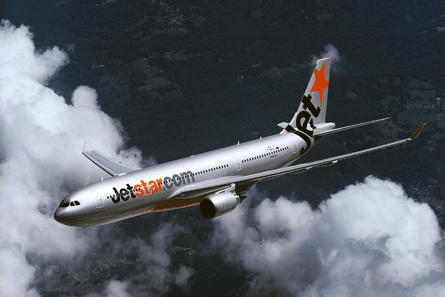Australian investigators have concluded that an unreliable airspeed incident involving a Jetstar Airbus A330-200 was caused by ice obstructing at least two of the twinjet's pitot probes.
The aircraft involved in the 28 October 2009 event, VH-EBA, had also been involved in a similar occurrence seven months earlier, says the Australian Transport Safety Bureau.
Pitot icing has become a focus of attention in flight operations following the loss of an Air France A330 over the Atlantic in June 2009. Although the accident remains unexplained, the French investigation has gathered evidence of unreliable airspeed indications before the crash. While the Air France aircraft was fitted with Thales pitot probes, the Australian inquiry notes that the Jetstar A330 - which was operating from Tokyo Narita to Coolangatta - was fitted with Goodrich probes.
These have been "associated with a much lower rate of pitot probe obstruction due to icing" than other probes, says the investigators' report.
 |
|---|
© JetstarThe Jetstar aircraft suffered a rapid drop in airspeed indication |
In the wake of the Air France crash, European safety authorities instructed operators to ensure that at least two of the three pitot probes were the Goodrich type.
The Jetstar aircraft had been cruising at flight level 390, through a region of cumulonimbus cloud, when there was a "rapid and momentary drop" in the airspeed indication, from about 250kt to 50kt, on the captain's display, says the ATSB. There was also a brief decrease in the standby airspeed indication.
This was immediately followed by automatic disconnection of the autopilot, autothrust and flight directors, and the flight control system reverted to 'alternate' law.
The crew responded with Jetstar's procedures for handling unreliable airspeed, and then re-engaged autopilot and autothrust, although both automatically disconnected for a second time shortly afterwards.
After switching autopilot, and re-engaging autothrust again, the crew checked that all three airspeed indicators were in agreement and continued to monitor them for the rest of the flight. The event had no effect on the aircraft's flight path.
The previous incident to the same aircraft had occurred on 15 March, but was not investigated at the time.
But the ATSB has obtained information showing that the jet had been flying in the vicinity of thunderstorms and that there had been "problems with the incoming airspeed information", including a speed decrease of more than 30kt in 1s on at least two airspeed channels.
"The crew [during the 15 March event] recalled that the captain's airspeed quickly went to zero, the autopilot disconnected and various other messages were presented on the [electronic centralised aircraft monitor]," the ATSB adds.
"The event was over very quickly and there was no ongoing disagreement between the three airspeeds."
Jetstar had started introducing unreliable airspeed training for cockpit crews shortly before the October 2009 incident, although the ATSB points out that many pilots had not received this training at the time of the event.
Source: Flight International























